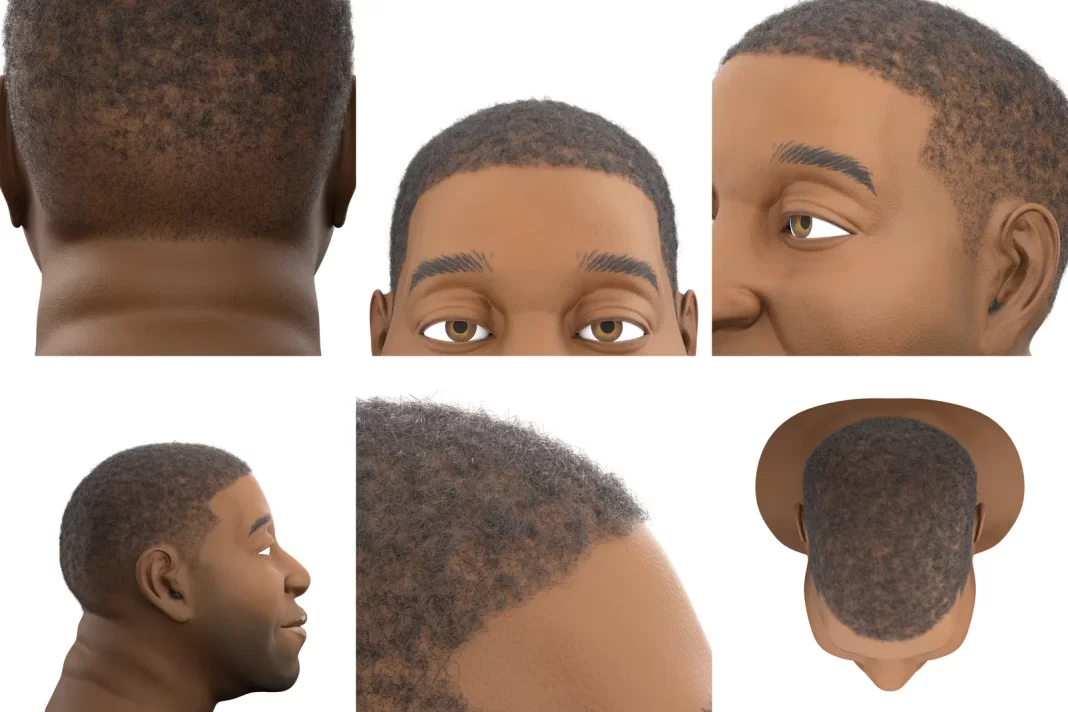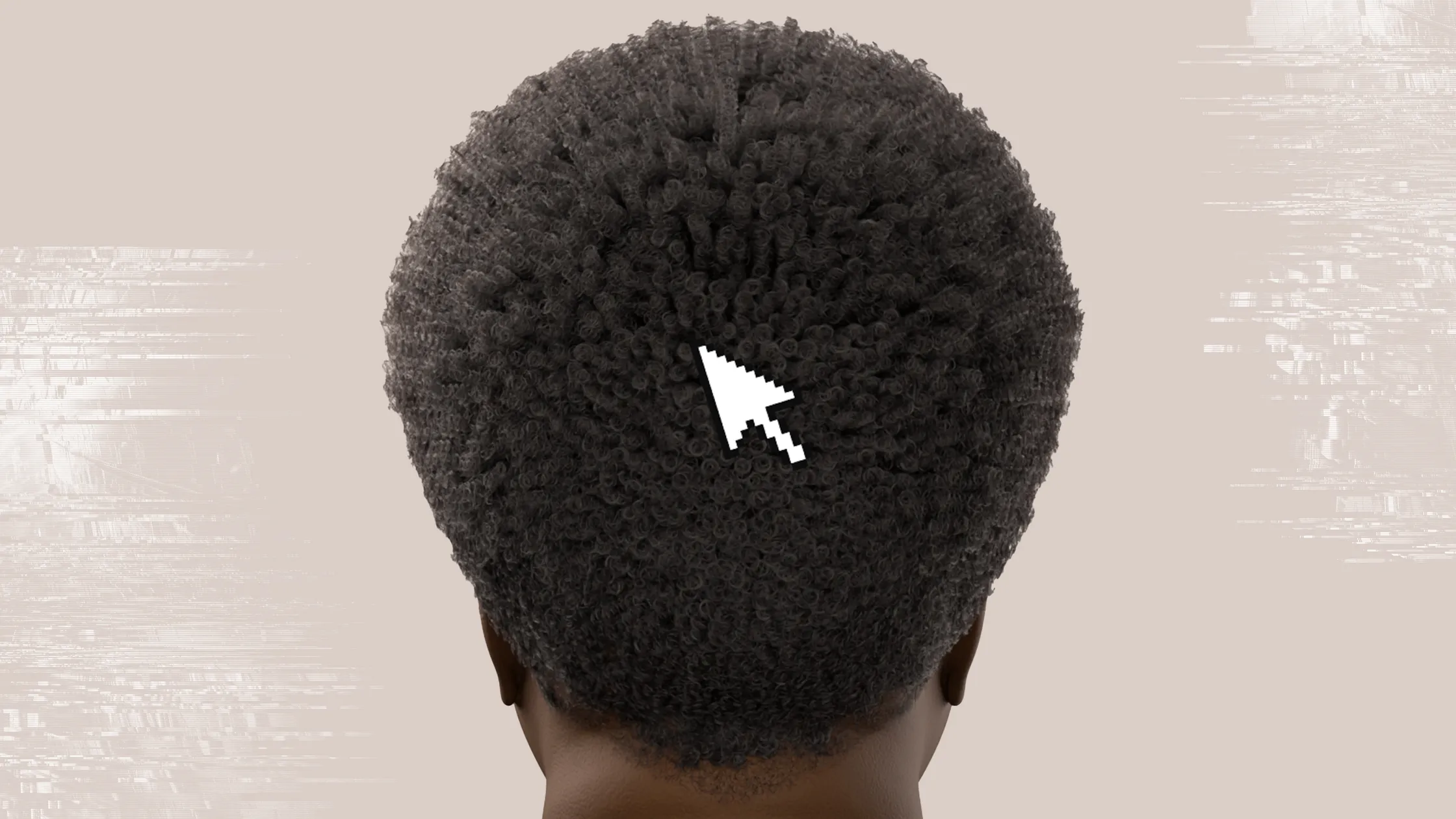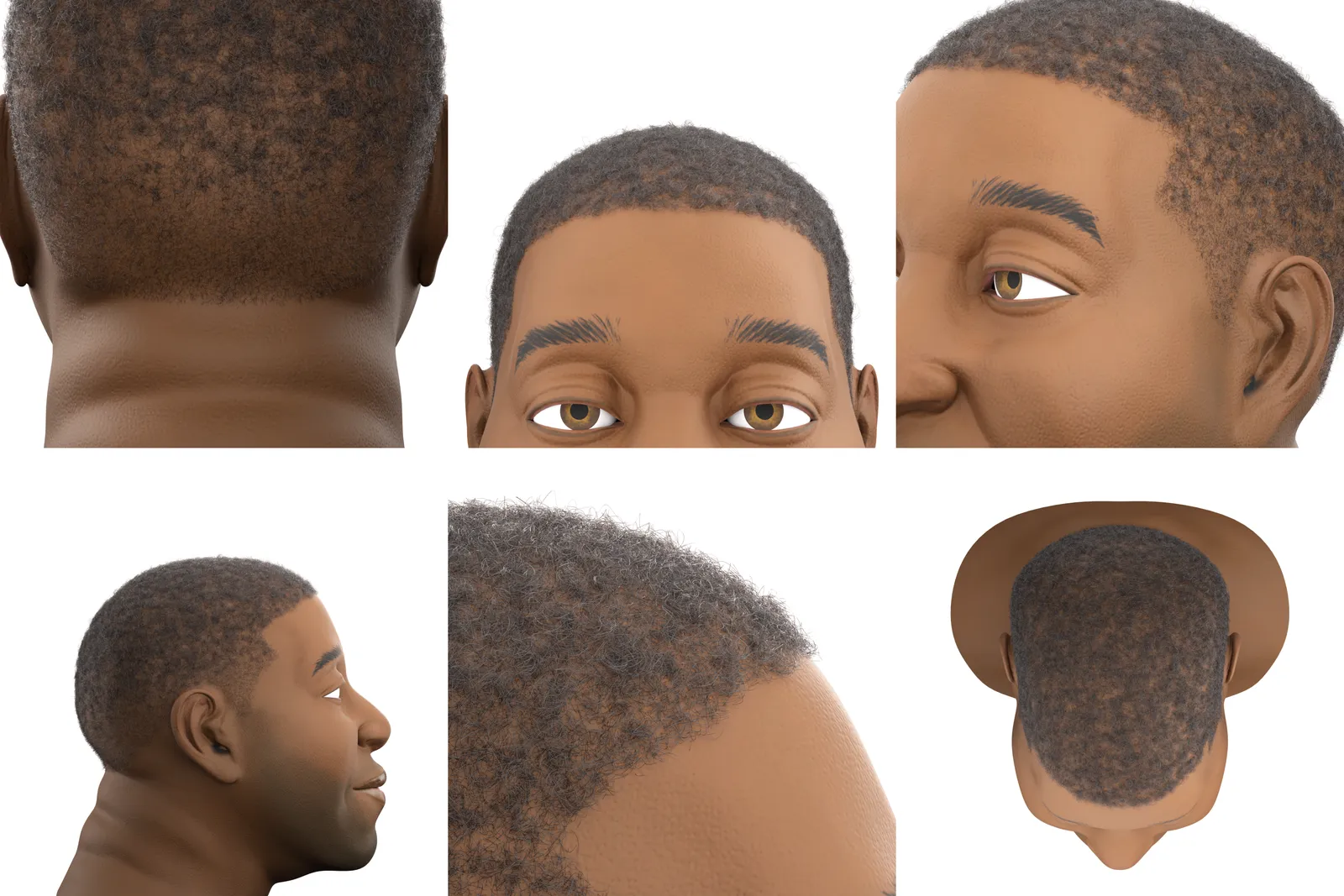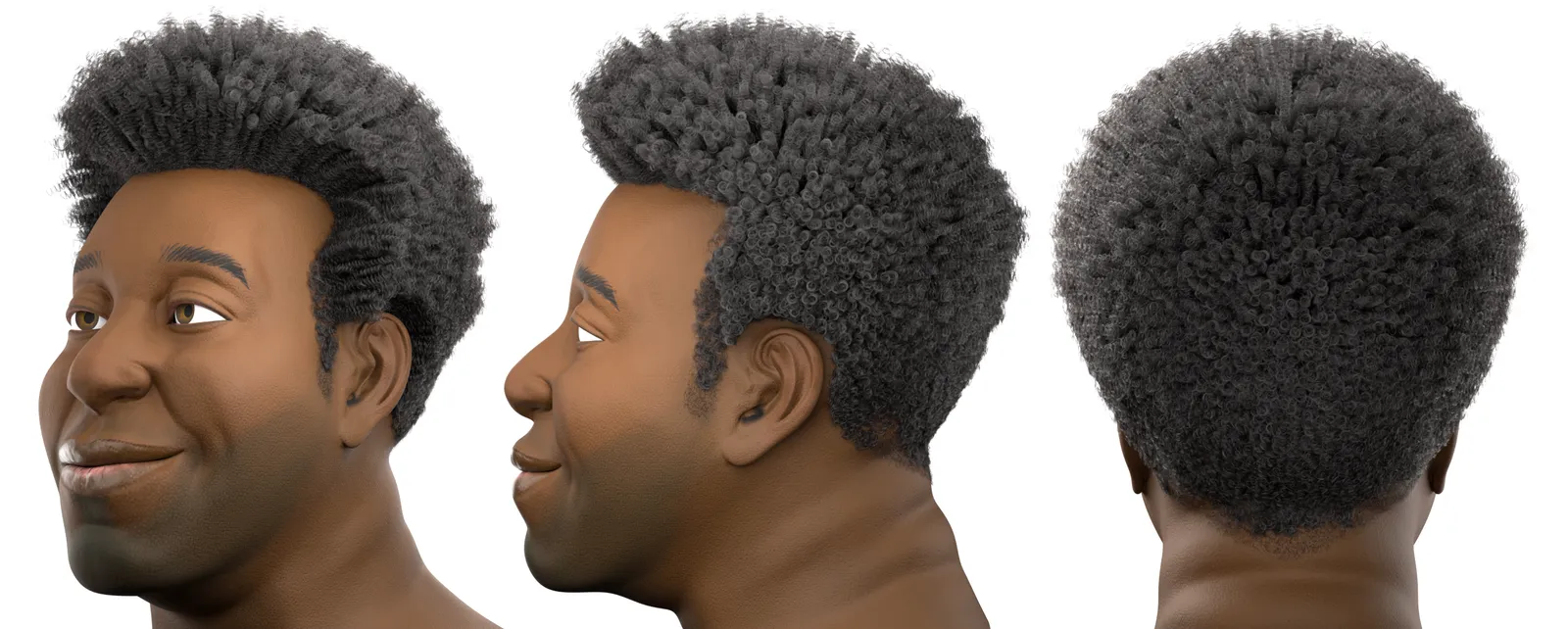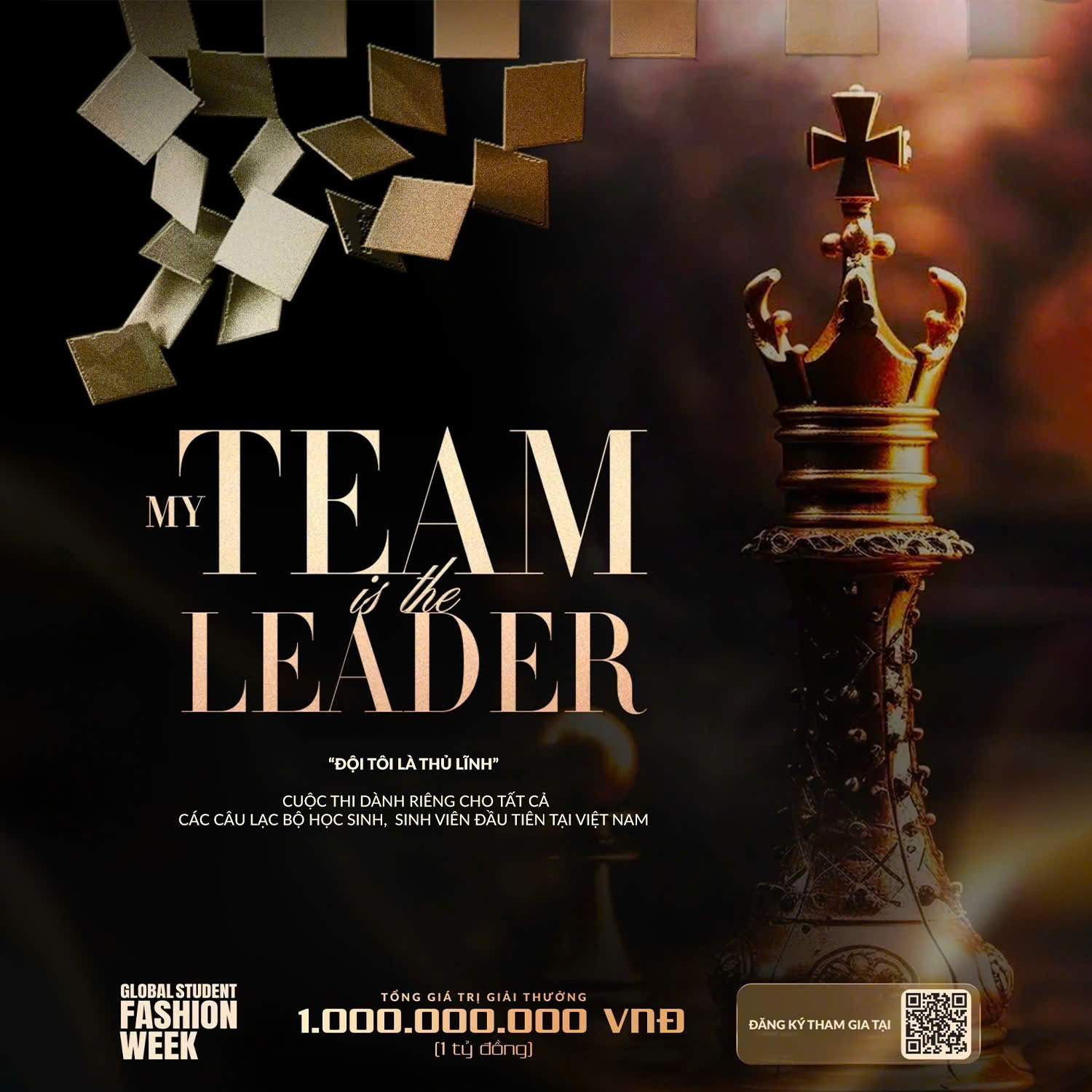Artists figured out years ago how to animate hyper-detailed straight, wavy, or loosely curled hair: see Rapunzel’s golden, tower-length locks in 2010’s Tangled or Merida’s bouncy, ginger ringlets in Brave from 2012. Simulating similarly detailed tight curls and coils for Black characters, however, has proven to be an ongoing challenge, even for incredibly well-budgeted animation teams such as Disney’s: After all, it wasn’t until 2021 that the studio delivered Black hair that had actual, visible texture with Encanto. This has, of course, directly affected the amount and quality of representation for Black audiences.
In an effort to close the gap, Theodore Kim, a professor of computer science at Yale, and A.M. Darke, an associate professor of performance, play, and design at the University of California at Santa Cruz, calculated an algorithm to simulate Afro-textured hair, the first and only of its kind. Their paper about the algorithm, titled “Curly-Cue: Geometric Methods for Highly Coiled Hair,” was co-authored by two of Kim’s doctoral students, Haomiao Wu and Alvin Shi, and released online in October. It will be officially published and presented at Siggraph Asia, one of the world’s most prestigious computer graphics conferences, in December.
The algorithm itself took about a year to develop, although the team spent nearly four years researching, building an entirely new system of physics animation software called HOBAK, and publishing other work about computing graphics of Black hair along the way. “We showed that generating Black hair with these phenomena is possible, but it’s still really hard,” Kim tells Allure. “Making the three hairstyles in the paper [a tapered Afro, a long Afro, and a fade] was very challenging; just barely out of the realm of the impossible. There’s still lots of room for improvement.”
But what does a mathematical algorithm have to do with animation? A lot, it turns out. Animations in modern TV shows, movies, and video games are created with a combination of mathematics and, in Kim’s words, “artistic intervention.” Elements like hair are simulated using physical equations calculated by software engineers, which creates a base animation for artists to then “go back in… and re-comb the hairs that don’t quite hit the right artistic note.” Artists are no longer drawing hairs using pen and paper but rather “meticulously polishing [generic heads of hair] with a mouse and keyboard until they look just right,” Kim explains. “This is the new ‘by hand.’”
Generating algorithms is, indeed, time-consuming, but once they are finalized and applied, artists can focus more on the creative aspects of their animations. Historically speaking, however, these equations have only considered the look and movements of straight or loosely curled hair textures. In attempt to provide the same time-effectiveness for animating Afro-textured hair, Kim and Darke simultaneously employ three different animation methods in their algorithm: phase locking, period skipping, and switchbacks, all of which simulate specific facets of Afro-textured hair.
As Darke tells Allure, the phase locking method simulates “the diffuse matrix of hair that exists closer to the root before individual hairs have coalesced into a curl.” In other words, “It’s the spongy Afro layer close to the scalp.”
Period skipping simulates what Darke refers to as the frizz factor. “As all naturals know, some hairs like to break out of the curl and come back; some never return.” These hairs that stray from the curl formation create a less defined look, a unique behavior that she says is critical to capturing the subtle distinctions of Afro-textured hair.
Switchbacks represent a curl’s sudden change in direction. Different from period skipping, switchbacks are not stray curls—they’re overall shifts in a curl’s direction. If a curl is spiraling in its one direction and suddenly inverts or dips, that change would be considered a switchback. “It’s like the special sauce that just gives you a dash of realism,” Darke says, because natural curls simply don’t curl all in one direction. “My favorite reaction so far is folks saying, ‘Now I know what that’s called!’ because it’s such a common feature of curly hair but no one had really described it, much less made it a key feature for crafting digital hair.” In previous research these unique breaks in patterns were known as “helical perversions,” but Darke and Kim wanted its new name to avoid any negative connotations.
These nuances are what’s missing from textured hair in even some of the most evolved animations. “There’s stuff that even the best artists can’t achieve,” Kim says. “Looking at Layla Ellison’s hair [in the video game Redfall], just like with Princess Merida [from Brave], my immediate question is: Where are all the switchbacks? The tools simply didn’t support them during creation.” He also notes that Ellison’s roots are not visible, an artistic choice he believes was designed to hide the technical limitations in achieving that spongy layer, or phase locking.
“Curly-Cue” is a welcomed advancement in coily hair simulation, but one has to wonder: What took so long? “There are technical constraints to consider, but I’ve always argued that the biggest challenge is a lack of cultural literacy,” says Darke, who’s the founder of Afro Hair Library, a free 3D model database resource for Black hair textures and styles, and a key contributor to Dove’s Code My Crown, a free PDF guide for game developers that outlines Black hair basics such as what different curl patterns and protective styles look like. This lack of cultural literacy is only furthered by a lack of Black representation among art and animation industries. For example, a 2021 survey revealed that only 5 percent of participants in a variety of roles across the gaming industry identified as Black. This lack of diversity and inclusion, especially in teams responsible for the physical features and storylines of characters, directly impacts not only the number of Black characters we see in our media but the artistic quality of Black characters and the priority or urgency in which they are developed and perfected.
That’s not helped by the fact that, as Kim says, “the math for straight hair is literally like a straight rod.” Mechanical engineers, for example, may liken all hair to a piece of cooked spaghetti and base the mathematical model for hair’s look and motion on said spaghetti: floppy, flexible, protruding straight downward. “But when that’s your baseline, it suddenly becomes very tricky to even conceptualize, ‘Maybe that assumption was wrong. Maybe hair is not a piece of spaghetti. Maybe hair is actually a very curly helix instead.’” The solution is layered; he emphasizes a need for diverse artists and engineers, a cultural shift to value Afro-textured hair as much as straight hair, and a new outlook on math that doesn’t consider straight hair the default.
As for when we can expect to see the results of Kim and Darke’s algorithm in TV, films, games, and other animations, Kim says the short answer is “not tomorrow.” Simulations such as theirs are usually integrated in movies first because those images only need to be computed once and then digitally manipulated into the desired positions—as opposed to gaming, where an animator must compute each frame from scratch—according to Kim. Historically speaking, when animation studios are interested in a new algorithmic code, it takes a few years to integrate it into their production software. The application, however, is fairly quick once this is sorted. Because video game characters have more spontaneous movements that rely upon the player’s direction, it will take even more time to see this work reflected in gaming. “There’s a few more algorithms that have to be developed that make it fast enough that it can complete [an animation] in a thirtieth of a second, which is a very slim amount of time,” Kim tells Allure.
But it’s worth the wait, if you ask me. Accurate and meaningful Afro-textured hair representation goes far beyond the need for acceptance—it is critical to a safe and equal Black experience, given that a lack of Black representation on screen has a direct impact on our self-esteem and overall societal perception. I’m a 37-year-old woman with type 4 hair, I love Disney and Pixar animated movies, and I feel immense joy and pride when I see characters that represent me or my younger self in them. As someone who grew up getting her hair pressed and relaxed straight, I didn’t see or feel my own natural hair texture until I was 22 years old. Until then, having natural hair never even occurred to me as an option because I was conditioned to believe that straight, “tamed” hair was the norm and standard—conditioning in which my favorite animated movies certainly took part.
Afro-textured hair simulation, done responsibly and with care, is culture-shifting. It expands the work of others who’ve fought against texturism and helps to normalize the idea of tight curls and coils being equally desirable as other hair types. This is especially impactful for children, whose ideas of what and who is beautiful, trustworthy, and worthy of humanity can be greatly shaped by animated characters. And it doesn’t hurt the confidence of 37-year-old women who still geek out on Disney, either.

